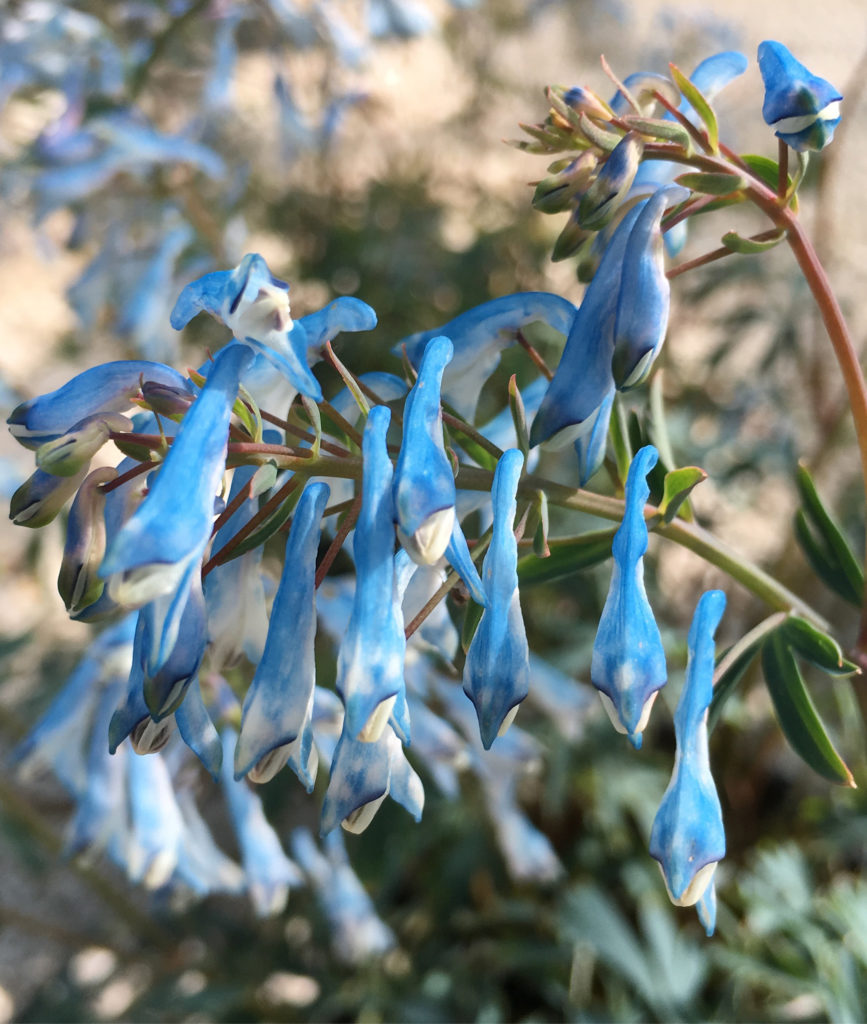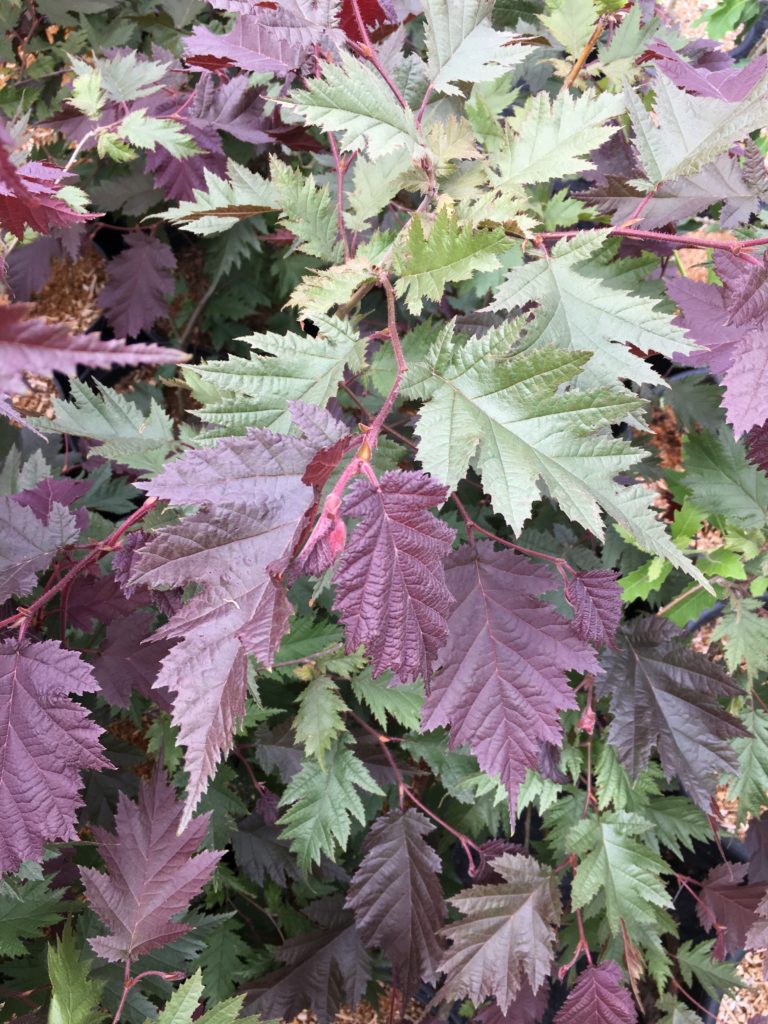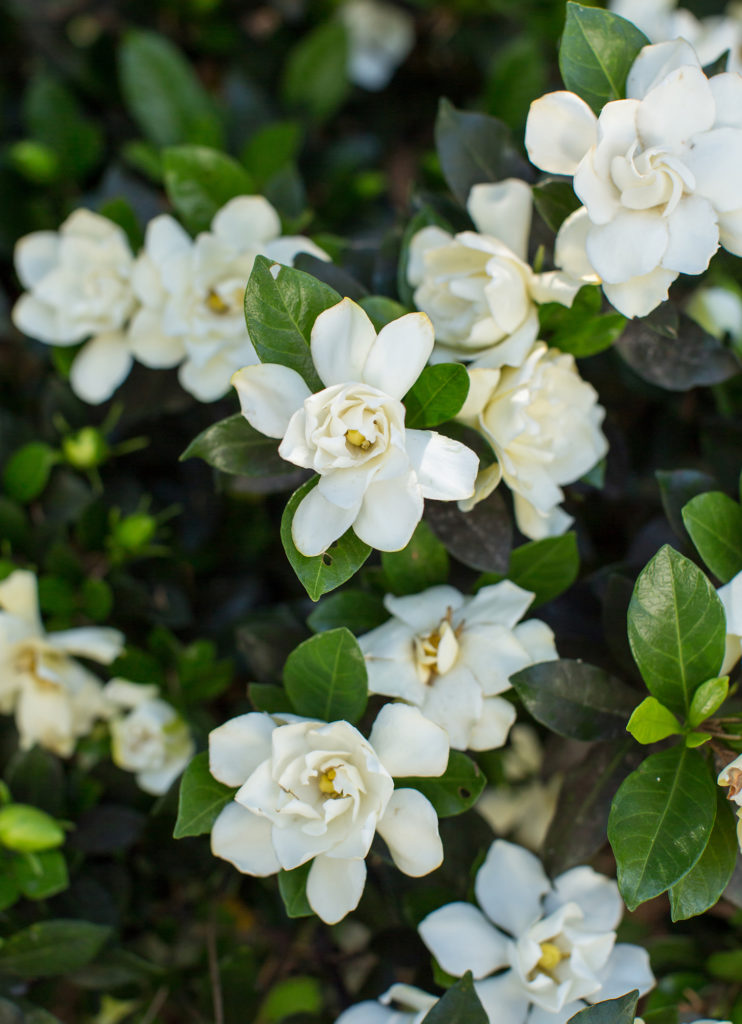- Mesa de Maya Southwest Oak™ (Quercus × undulata ‘Mesa de Maya) — Judges’ Best in Show Award.
- Corydalis Hillier ‘Porcelain Blue’ (Corydalis ‘Porcelain Blue’) — Judges’ Award of Merit.
- Burgundy Lace Hazelnut (Corylus Javellana ‘Burgundy Lace’ (OSU 954.076) PPAF) — Judges’ Award of Merit.
- First Editions Sweet Tea Gardenia (Gardenia jasminoides ‘PIIGA-II’ PP27258) — Judges’ Award of Merit.
An expert panel of judges selected Mesa de Maya Southwest Oak (Quercus x undulate ‘Mesa de Maya’) as the Best in Show winner at the 2017 Farwest Show New Varieties Showcase.
Mesa de Maya was just one out of 40 outstanding new selections that were displayed at the 2017 Farwest Show and available from at least one show exhibitor. The show was held August 23–25, 2017 at the Oregon Convention Center in Portland, Oregon.
“Farwest has a long legacy of showcasing the best new selections the horticulture industry has to offer, and our 2017 show continues that proud tradition,” show director Allan Niemi of the Oregon Association of Nurseries said.
Mesa de Maya Southwest Oak was selected from seedlings grown by Dr. Allan Taylor, oak explorer and expert, in Boulder, Colorado. It is part of the curated program of Western adapted oaks branded as Southwest Oaks™, released by Heritage Seedlings & Liners (booth #9037) of Salem, Oregon.
Mesa de Maya Southwest Oak™ has large blue-gray leaves which hold their color late into autumn. The foliage lacks most prickles and to many doesn’t look like oak foliage. The tree, reaching 25 feet in height at maturity, will be a stunning contrast to most background colors. Because it is grafted onto very adapted rootstock, it will have a very broad range of application from Washington to Colorado, to West Texas over to California. In the West and the Southwest it will thrive in arid and drought-prone plantings but it will also flourish in irrigated sites. Suitable for use as a specimen and in commercial plantings. It enjoys full sun, and adapts to drought and high pH soils, but also thrives in irrigated landscapes. This grafted form will grow with a single stem to 25 feet tall with a 20-foot spread. It could also be branched low and grown as a multi-stemmed tree, as is common to its wild sisters.
In addition of the Best of Show award, three Awards of Merit were given by the judges. They were as follows:
- First Editions Sweet Tea Gardenia (Gardenia jasminoides ‘PIIGA-II’ PP27258) — Introduced by Bailey Nurseries (booth #17019). This new, reblooming double gardenia has tennis-ball-sized flowers with the gardenia fragrance we all know and love. Sweet Tea™ is more upright and larger than Double Mint and is more winter hardy. It survived 4–6 F in 2013–2014 in an aboveground container with no injury and is currently being tested for Zone 6 hardiness — that’s saying something since many other gardenias suffered severe damage during the same winter. Can be used in borders or containers or as an accent plant. Blooms on new wood. Requires partial shade and medium water with soil pH of 5.5–6.5. Growth habit is compact and rounded, reaching 3½ feet tall and wide.
- Burgundy Lace Hazelnut (Corylus avellana ‘Burgundy Lace’ (OSU 954.076) PPAF) — Introduced by Heritage Seedlings and Liners (booth #9037). Selected from seedlings at Oregon State University from crosses made in 1998. Introduced by Heritage Seedlings & Liners. Zones 4–8. Burgundy Lace is especially attractive in spring and early summer because of its lacey red foliage, and in winter, when its catkins stand out against gray skies. Because it is resistant to Eastern filbert blight, disease isn’t a concern. A moderately sized tree, it is easily managed even in smaller yards and it has edible nuts held in ornamental red husks. The market for this tree is wide open as an edible ornamental tree. It is the only European hazelnut combining three special traits: cut foliage, red leaf color and genetic resistance to European filbert blight. It will work well as a specimen, a smaller street tree or in place of winter or spring prominence to show off its color or colored catkins. It could be grown as a large shrub as well. Some drought tolerance once established. To yield a crop of nuts, needs cross pollination from Felix or Theta because of their late pollen release and their genetic compatibility. Since trees are produced from tissue culture, there is no graft incompatibility issue, though suckers must be removed if a single stem is desired. Moderately fast grower, with a mature height of 35 feet and spread of 30 feet.
- Corydalis Hillier ‘Porcelain Blue’ (Corydalis ‘Porcelain Blue’) —Introduced by PlantHaven International Booth #16047 and Skagit Horticulture (booth #16049). Bred by Hillier Nurseries in the United Kingdom and introduced by PlantHaven International. Zone 5. Most Corydalis selections are summer dormant, whereas Corydalis Hillier™ ‘Porcelain Blue’ blooms from early spring through fall. It offers a strong growth habit unlike any other Corydalis on the market. Produces masses of electric-blue flowers, with profuse repeat flowering. Attractive cut blue-green foliage. Works well in pots and containers, as a garden border and in modern landscapes. Grows best in well-drained soil. Tidy, clumping growth habit reaching 10 by 12 inches.
During the Farwest Show, people in attendance were able to vote for their favorites. The votes were tallied, resulting in the selection of three People’s Choice Awards that were announced on the final day of the show.
Black Diamond® Purely Purple™ Crape Myrtle (Lagerstroemia indica ‘#18 Li’ PPAF) was chosen for the People’s Choice Best in Show award. The plant was bred by Jim Berry of J. Berry Nursery and was available at the show from Fessler Nursery. Purely Purple is an aesthetic standout with dramatic dark foliage and stunning purple blooms. This resilient plant will perform in the most challenging landscapes due to its sun and drought tolerance. Purely Purple is incredibly versatile in function as it can be pruned to tree form, shrub form, perennial form, and is stunning as an annual in a patio container or landscape. It features black foliage from spring until first frost, along with masses of purple blooms from early summer until frost. It works as a feature tree, flowering shrub, patio container, perennial, or even annual color for zones 5 and below. It takes full sun and is drought tolerant once established. Intermediate habit with a mature height of 10–12 feet tall and width of 8 feet.
In addition to the People’s Choice Best in Show award, two People’s Choice Awards of Merit were also announced as a result of the voting:
- Strait-Laced™ Elderberry (Sambucus nigra ‘SNR1292’ USPPAF) — Developed by Ken Tobutt and Fiona Wilson in the United Kingdom and introduced by Proven Winners® ColorChoice® Shrubs (Booth #3045). Beautiful elderberries like Black Lace® and Black Beauty™ have long been some of our most popular varieties — but as fairly large plants, not everyone has space for them. Enter Strait-Laced, an amazing narrow, upright variety that takes up only a few square feet of ground. Feathery black foliage covers broomstick-straight stems that shoot toward the sky but stay in a narrow column. Early summer brings hundreds of pink flowers to contrast with the leaves. It’s an exotic looking plant that’s surprisingly hardy and easy to grow! The columnar habit takes up far less space than other elderberries. Elegant, feathery black foliage provides unmatched color and texture. Pink flowers emerge in early summer. With its unusual columnar habit, there are practically limitless landscape uses for Strait-Laced Elderberry. It works well in pairs as a formal planting at entryways or in containers; it also makes a quirky and eye-catching specimen in any landscape or garden. Easy care. Regular pruning is not required, but any dead wood should be removed in early spring. Any errant shoots can be pruned out to the ground as needed. Plant in full sun for best color and shape. Not recommended for warm climates. Grows in part sun to sun. Grows 6–8 feet tall and 3–4 feet wide.
- Hydrangea macrophylla ‘Miss Saori’ PP26657 — Bred by Ryoji Irie from Japan and introduced by Concept Plants. This particularly beautiful hydrangea was presented as a debutant at the RHS Chelsea Flower Show and won the title “2014 Chelsea Plant of the Year,” meaning it was declared the best of 40 entries. This prestigious title was awarded because of the vivid colors and special qualities of this hydrangea. The double-petalled, sterile flowers have deep-rose margins. This color softens to white in the center and forms a nice contrast with the dark foliage that turns burgundy in spring and autumn. ‘Miss Saori’ has a long flowering period that starts in June. Flowers even on first-year wood. The ideal location is in full sun or semi-shade. Beautiful in borders or containers, but also excellent as a cut flower. Matures to 40 inches tall and wide. Available as 4-inch liners from Silver Falls Nursery
All of the New Varieties Showcase selections are viewable at the Farwest Show website.







